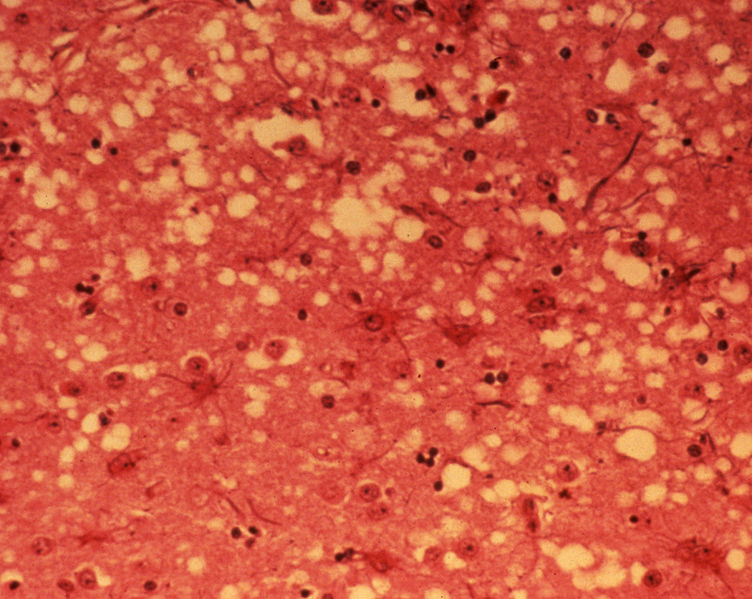Bovine spongiform encephalopathy pathophysiology
|
Bovine Spongiform Encephalopathy Microchapters |
|
Differentiating Bovine Spongiform Encephalopathy from other Diseases |
|---|
|
Diagnosis |
|
Treatment |
|
Case Studies |
|
Bovine spongiform encephalopathy pathophysiology On the Web |
|
American Roentgen Ray Society Images of Bovine spongiform encephalopathy pathophysiology |
|
Bovine spongiform encephalopathy pathophysiology in the news |
|
Directions to Hospitals Treating Bovine spongiform encephalopathy |
|
Risk calculators and risk factors for Bovine spongiform encephalopathy pathophysiology |
Please help WikiDoc by adding more content here. It's easy! Click here to learn about editing.
Editor-In-Chief: C. Michael Gibson, M.S., M.D. [1]
Overview
Pathophysiology
The infectious agent in BSE is believed to be a specific type of misfolded protein called prion. Misfolded prion proteins carry the disease between individuals and cause deterioration of the brain. BSE is a type of transmissible spongiform encephalopathy (TSE).[1] TSEs can arise in animals that carry an allele which causes normal prions to contort by themselves from an alpha helical arrangement to a beta pleated sheet, which is the disease-causing shape for the particular protein. Transmission can occur when healthy animals come in contact with tainted tissues from others with the disease. In the brain these proteins cause native cellular prion protein to deform into the infectious state, which then goes on to deform further prion protein in an exponential cascade. This results in protein aggregates, which then form dense plaque fibers, leading to the microscopic appearance of "holes" in the brain, degeneration of physical and mental abilities, and ultimately death.
Different theories exist for the origin of prion proteins in cattle. Two leading theories suggest that it may have jumped species from the disease scrapie in sheep, or that it evolved from a spontaneous form of "mad-cow disease" which has been seen occasionally in cattle for many centuries.[2] The British Government enquiry took the view the cause was not scrapie as had originally been postulated, and was some event in the 1970s which was not possible to identify.[3]
Microscopic Pathology

References
- ↑ "An Overview of Bovine Spongiform Encephalopaphy" (PDF).
- ↑ New Scientist, 17 March 2007, p 11
- ↑ http://www.bseinquiry.gov.uk/report/volume1/execsum4.htm